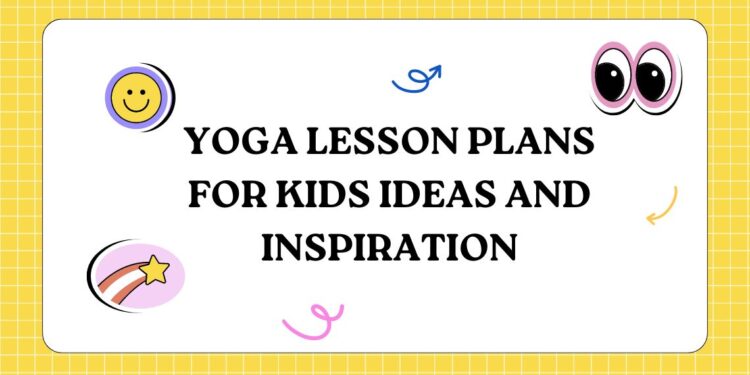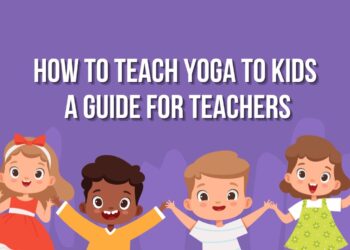Yoga is a wonderful way to introduce children to the benefits of physical activity, mindfulness, and emotional regulation. However, teaching yoga to kids requires a different approach than teaching adults. The key is to make it fun, engaging, and age-appropriate. If you’re looking to create yoga lesson plans for kids, this article will provide you with ideas and inspiration to help you design sessions that are both educational and enjoyable.
1. Themed Yoga Sessions
One of the best ways to keep kids engaged is by incorporating themes into your yoga lessons. Themes add a layer of imagination and storytelling, making the practice more relatable and exciting for children.
- Animal Adventure: Create a yoga session where each pose represents a different animal. For example, you can include Cat Pose (Marjaryasana), Cobra Pose (Bhujangasana), and Downward-Facing Dog (Adho Mukha Svanasana). Encourage the kids to make animal sounds and movements as they transition from one pose to the next.
- Under the Sea: Take the children on an underwater journey with poses like Starfish Pose, Dolphin Pose (Ardha Pincha Mayurasana), and Shark Pose (variation of Locust Pose). Use storytelling to describe the underwater world, asking kids to imagine they are sea creatures exploring the ocean.
- Space Adventure: Launch into outer space with a space-themed yoga session. Use poses like Rocket Pose (variation of Chair Pose), Star Pose (Extended Mountain Pose), and Moon Pose (Crescent Lunge). Invite the kids to pretend they are astronauts floating in zero gravity, traveling from one planet to another.
Tip: Themes make yoga more interactive and can be tied to educational topics such as animals, nature, or science, enhancing the learning experience.
2. Yoga Games and Activities
Incorporating games and activities into your yoga lesson plans keeps the practice dynamic and enjoyable for kids.
- Yoga Freeze Dance: Play music and let the kids dance around the room. When the music stops, they must freeze in a yoga pose. This game combines movement with mindfulness and helps improve balance and coordination.
- Pose Charades: Write down different yoga poses on pieces of paper and place them in a hat. Each child takes turns drawing a pose and demonstrating it while the others guess which pose it is. This game reinforces their memory of the poses and adds a fun, competitive element.
- Yoga Obstacle Course: Set up an obstacle course using yoga mats, blocks, and other props. At each station, the children must perform a specific yoga pose before moving to the next obstacle. This activity combines physical challenges with the practice of yoga, keeping the energy high.
Tip: Yoga games are great for group settings and can be adapted to suit the number of participants and the available space.
3. Incorporate Mindfulness and Breathing Exercises
Mindfulness and breathing exercises are essential components of yoga, helping kids learn how to manage their emotions and stay focused.
- Balloon Breathing: Ask the kids to imagine they have a balloon in their belly. Instruct them to inhale deeply through their nose, filling the balloon, and then exhale slowly through their mouth, deflating the balloon. This exercise teaches deep breathing and helps calm the mind.
- Mindful Listening: Have the children sit quietly with their eyes closed and listen to the sounds around them. After a minute or two, ask them to share what they heard. This activity enhances their ability to focus and be present in the moment.
- Gratitude Circle: End the session with a gratitude circle. Have each child share something they are grateful for while sitting in a circle. This practice fosters a positive mindset and encourages emotional expression.
Tip: Incorporating mindfulness and breathing exercises into your lesson plans helps children develop tools for emotional regulation and stress management.
4. Creative Art and Yoga
Combining art with yoga allows kids to express their creativity and deepen their connection to the practice.
- Pose Drawing: After practicing a sequence of poses, provide the kids with paper and crayons or markers. Ask them to draw their favorite pose or create a scene that includes the poses they learned. This activity reinforces the poses and adds a visual component to the lesson.
- Yoga Mat Decoration: Provide plain yoga mats and let the children decorate them with their own designs using non-toxic markers. This makes their yoga practice more personal and encourages a sense of ownership over their mats.
- Story Yoga: Read a short story and have the children act out the characters and events using yoga poses. For example, if the story is about a forest, they can use Tree Pose, Mountain Pose, and Downward-Facing Dog to represent the trees, mountains, and animals in the forest.
Tip: Art activities can be used as a cool-down after a more active yoga session, helping children relax and reflect on their practice.
5. End with Relaxation and Reflection
Concluding each yoga session with relaxation and reflection helps children absorb the benefits of the practice and transition calmly back to their day.
- Guided Relaxation: Lead the children through a guided relaxation or visualization exercise. Ask them to lie down in Savasana (Corpse Pose) and imagine a peaceful place, such as a beach or a garden. Use calming language and soft music to help them relax completely.
- Body Scan: Guide the children through a body scan, asking them to focus on and relax each part of their body, starting from their toes and moving up to their head. This practice promotes body awareness and relaxation.
- Reflection Time: Give the children a few minutes to reflect on the yoga session. You can ask them questions like, “How do you feel after today’s practice?” or “What was your favorite part?” This reflection time helps them internalize the benefits of yoga and express their feelings.
Tip: Ending with relaxation and reflection reinforces the importance of mindfulness and helps children leave the session feeling calm and centered.
Conclusion
Creating yoga lesson plans for kids requires a blend of creativity, playfulness, and mindfulness. By incorporating themes, games, mindfulness practices, and art into your lessons, you can make yoga a fun and engaging experience for children. These activities not only keep kids interested in yoga but also help them develop important life skills such as focus, emotional regulation, and self-expression. Whether you’re teaching in a classroom, a studio, or at home, these ideas will inspire you to create meaningful and enjoyable yoga sessions for kids.










